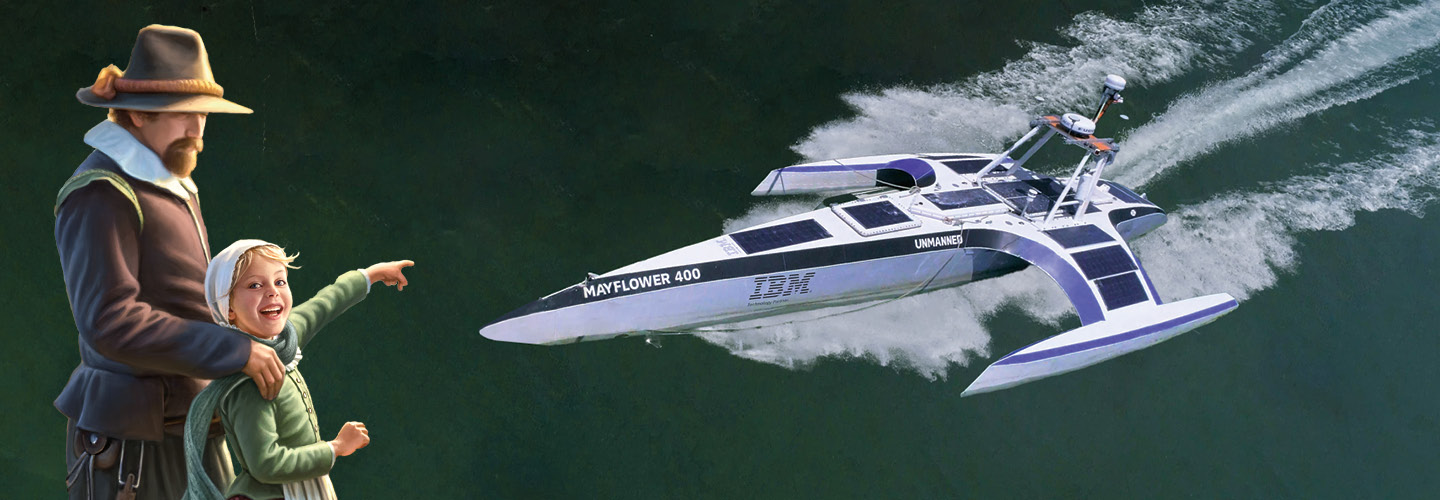Some 400 years after the Mayflower sailed across the Atlantic Ocean from England to Massachusetts in 1620, a high-tech vessel with the same name set off on a similar route. Only this time, no captain or crew kept it on course. The Mayflower Autonomous Ship (MAS) used artificial intelligence (A.I.) to complete the 2,700-mile trip from Plymouth, England, to Halifax, Canada, in about 40 days. The mission aimed to collect data about climate change, but it also allowed researchers to test this technology at sea. Experts predict A.I. won’t replace sailors entirely but hope it will ultimately improve travel and shipping operations across oceans by helping captains identify risks and make decisions in challenging circumstances. “The journey [M.A.S.] made across was arduous,” project director Brett Phaneuf told the BBC, “and has taught us a great deal about designing, building, and operating a ship of this nature and the future of the maritime enterprise.”

Courtesy of IBM (M.A.S.); Pilgrim Illustration by Greg Copeland
Text-to-Speech
